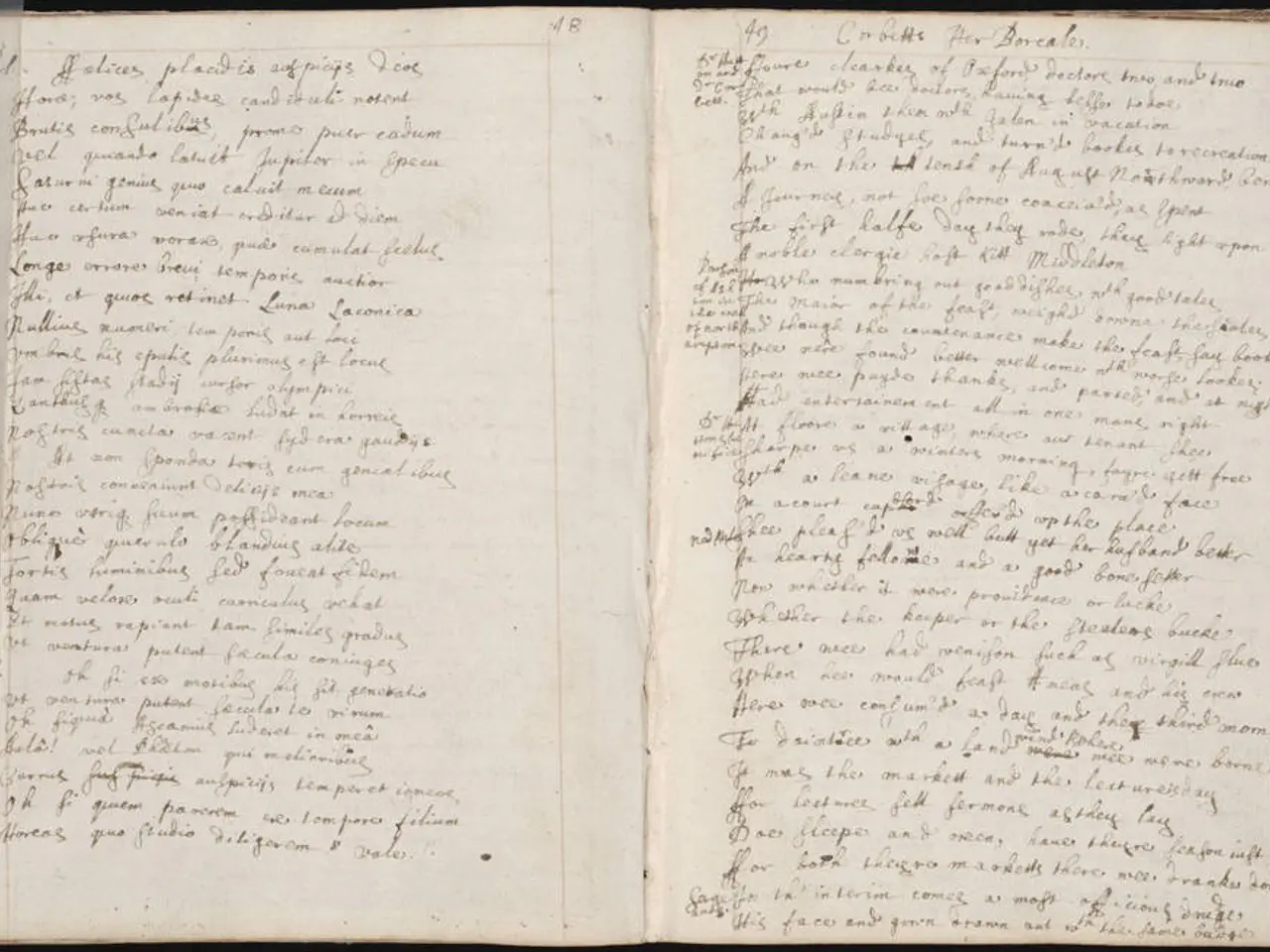Screenplay Structure's Midpoint Explained and Its Significance Discussed
The midpoint is a crucial narrative beat found in the heart of a screenplay, typically occurring between pages 55-60 in a standard 120-page screenplay. This pivotal moment serves as a turning point, reinvigorating the plot, escalating stakes, and revealing core themes.
To craft a strong midpoint, consider these techniques:
- Raise the stakes and test motivation: The midpoint should challenge the protagonist in new ways, pushing them past their limits and revealing deeper aspects of their character or goal. This heightens tension and keeps audiences invested.
- Clarify setup and antagonistic forces: Especially in stories that start in medias res, the midpoint is a key moment to resolve initial mysteries by explaining what the antagonist wants and what is truly at risk. This prevents confusion and maintains engagement.
- Use it as a turning point or pivot: The midpoint often acts as a structural turning point where the plot shifts toward resolution. It can be a big reveal, a reversal, or a decision that changes the protagonist’s direction, making it essential to structure this scene with clear stakes and emotional impact.
- Align with the three-act structure: Position the midpoint as the moment that divides Act 2 into two parts—the protagonist reacting to earlier events and then proactively confronting bigger challenges. This maintains rhythm and propels narrative momentum.
- Control pace and clarity: Employ micro-reveals—small explanations or plot points—that answer questions raised earlier in the story while posing new ones, sustaining curiosity without confusion. The midpoint should pay off early promises to the audience, keeping the throughline clear.
- Deepen character development: The midpoint should not only move the plot but resonate with the protagonist’s emotional or psychological arc. Revisiting and strengthening character goals and relationships in this scene can add complexity and authenticity, enriching the narrative.
- Streamline and maximize impact: During rewrites, map each scene’s role in the structure and ensure the midpoint beats deliver maximum emotional and narrative impact. Remove extraneous subplots or scenes that dilute this crucial moment’s power.
These principles apply broadly across genres but should be adapted to suit a screenplay’s tone, pacing, and audience expectations. For example, thrillers might emphasize tension and surprise twists at the midpoint, while dramas might highlight internal conflict or theme development.
Common pitfalls in midpoint development include predictability, underplaying stakes, and unclear character motivations. To avoid these, develop twists that are engaging yet rooted in the narrative's established setup, introduce structured tension, and create complex protagonists.
Engage viewers by creating midpoints with unexpected yet inevitable surprises and deepening emotional resonance. Midpoints manifest as various narrative elements, such as external twists and internal revelations.
Mastering the screenplay structure midpoint is indispensable for any writer, ensuring the screenplay remains engaging, surprising, and emotionally resonant. An effective midpoint seamlessly blends structural and emotional shifts.
Genres influence the type of midpoint twists that are most effective, with thrillers, romantic comedies, and science fiction having distinct midpoint twist characteristics. Analyzing famous films can help grasp the concept of a well-crafted screenplay structure midpoint.
For instance, "Legally Blonde" uses a personal revelation as its midpoint, leading to a radical change in the protagonist's journey. "The Dark Knight" uses the Joker's theatrical attack as its midpoint, challenging Batman's ideals and creating a turning point. "Jaws" uses a face-to-face encounter with a shark as its midpoint, solidifying stakes and transitioning the narrative.
In summary, crafting a strong midpoint involves making it a clear, high-stakes turning point that clarifies key story elements, deepens character investment, and propels the narrative into a more intense phase—all while maintaining narrative clarity and rhythm within the three-act framework.
- To enhance the viewing experience in the realm of movies-and-tv and entertainment, ensure the midpoint of your screenplay provides an engaging and unpredictable coverage, embodying a surprising yet inevitable twist that resonates with both character development and the intended genre's tone.
- For a screenplay to boast strong coverage in the movies-and-tv and entertainment industry, strive to elevate the midpoint by amplifying stakes, defining antagonists, and facilitating character transformation, all while adhering to the rules of the three-act structure and maintaining clear pacing and narrative flow.





